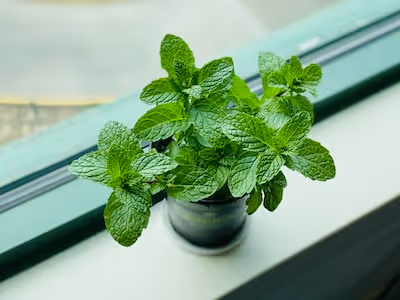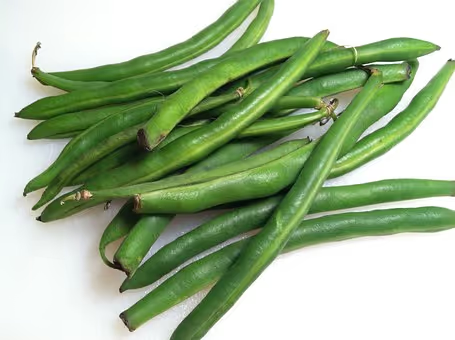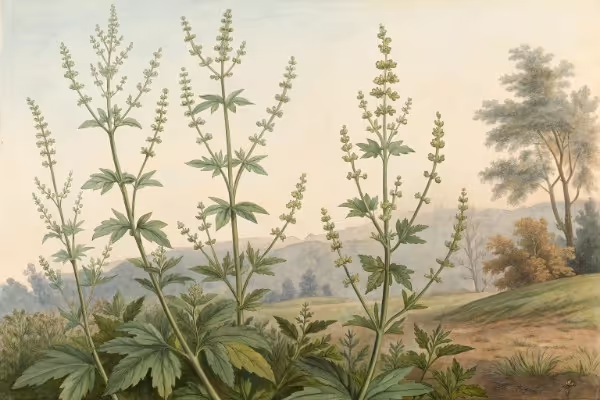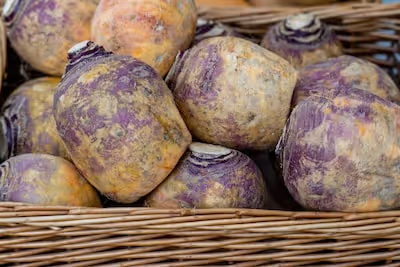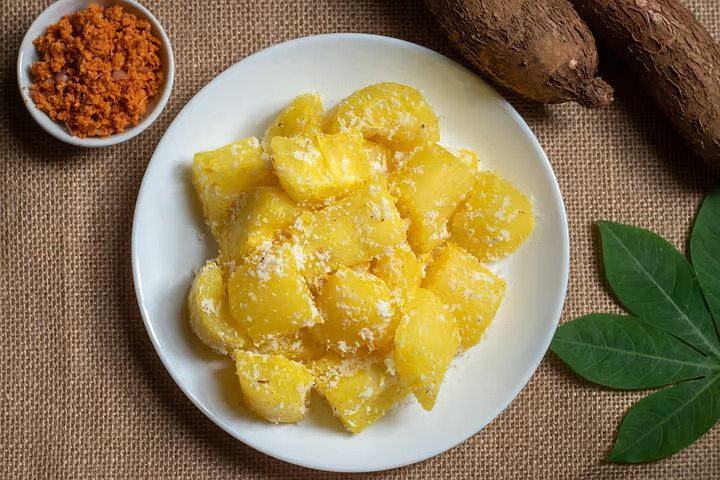Growing Thyme: Essential Tips for Planting Success
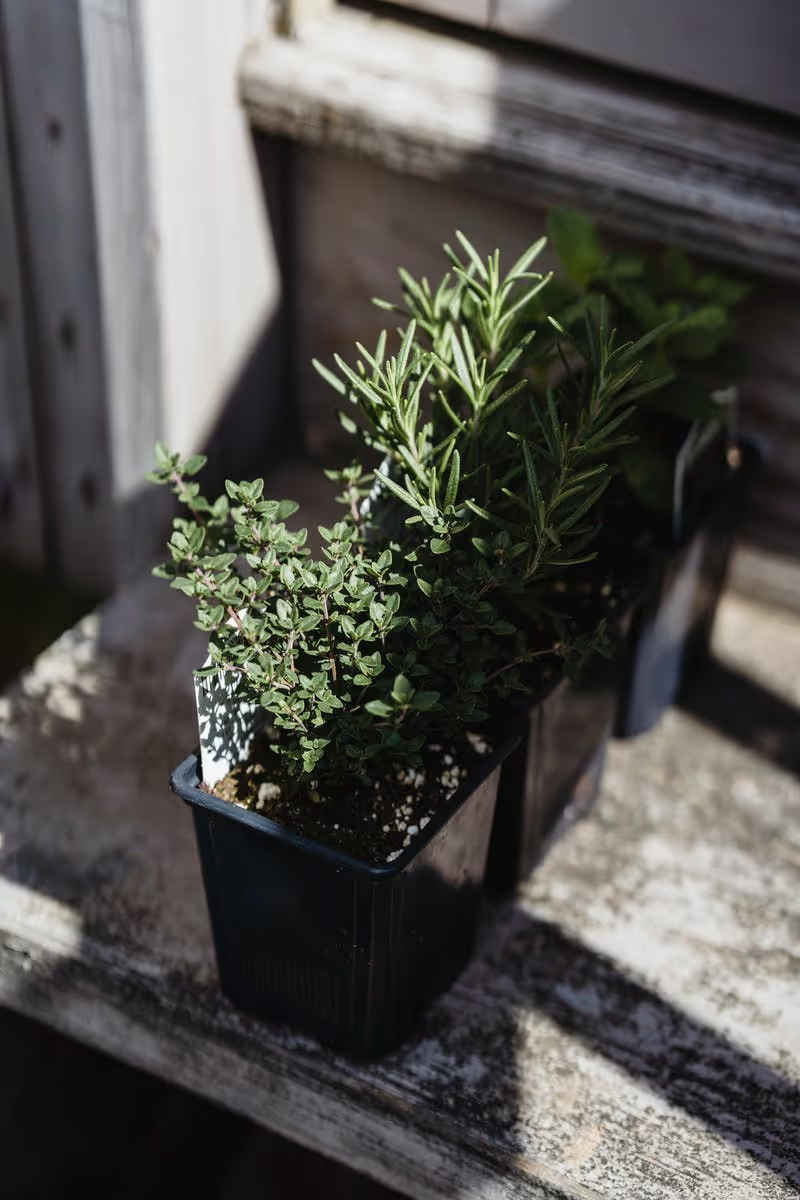
Growing Thyme
Growing thyme starts with sun-soaked soil, smart spacing, and the guts to trim it back without mercy. Pick a spot drenched in sunlight, keep plants roughly 12 inches apart, and cut away fading growth to spark new sprigs. Do it right, and you'll savor fragrant, kitchen-ready thyme that's truly worth tasting—read on for tips to keep your herb thriving.
Cheatsheet: Thyme Planting Success Guide
🌱 Select the Right Spot
Full sun thrives—6+ hours daily. Use well-drained, sandy soil (pH 6.0–8.0). Raised beds or containers prevent soggy roots.
🛠️ Tools and Products You'll Need
- Organic thyme seeds or starter plants
- Hand trowel
- Compost or organic soil mix
- Watering can or drip system
- Mulch (optional, for weed suppression)
- Pruning shears
🕒 Planting Timing
Sow after last frost; soil temp 60–75°F (16–24°C). Indoors: Start seeds 6–8 weeks before last frost. Transplant seedlings once strong.
🌾 Planting Steps
- Loosen soil 6 in (15 cm) deep. Mix in compost.
- Plant seeds ¼ in (0.6 cm) deep, 6–12 in (15–30 cm) apart. For established plants, space root balls 12–18 in (30–45 cm).
- Water lightly after planting. Keep soil just moist—never soggy.
- Thin seedlings to strongest plants once 2 in (5 cm) tall.
💧 Water & Care Routine
Allow soil to dry between waterings. Overwatering reduces oils—less flavor. Prune regularly for bushy growth and more leaves.
🍃 Harvest & Use
Begin snipping stems once 6 in (15 cm) tall. Regular harvests boost regrowth. Fresh thyme contains antioxidants, vitamin C, and supports immune health.
✨ Quick Stats
- Perennial: Yields up to 5 years in one spot
- High essential oil content—max flavor in full sun
- One plant flavors up to 80 meals/year
-
Growing Thyme: Essential Tips for Planting Success
I grow thyme for flavor, fragrance, and the way it shrugs off neglect if you set it up right. Give it sun, lean soil, and air, then get out of its way.
Site and Soil That Make Thyme Sing
Full sun is nonnegotiable, shoot for 6 to 8 hours daily or strong indoor light. I aim for 200 to 400 µmol m2 s1 PPFD under LEDs, which keeps plants compact and oily.
Drainage matters more than fertility. I blend 50 percent gritty sand or 3 to 5 mm gravel with 50 percent loam or a cactus mix, then raise the bed 6 inches 15 cm if rain lingers.
pH sweet spot sits near neutral to slightly alkaline. My best stands run at pH 6.5 to 7.5.
Skip manure-heavy compost. Too much nitrogen blows out foliage and dulls flavor.
“Thyme prefers full sun and well-drained soil. Prolonged wet conditions in winter can cause root loss.” — Royal Horticultural Society
Timing and Temperatures
Transplant after nights hold above 45 F 7 C. In-ground plants cruise between 55 and 85 F 13 to 29 C without complaint.
Hardiness varies by cultivar, but common thyme handles USDA 5 to 9 with good drainage. I mulch with gravel in zone 5 to keep crowns dry.
Seeds, Plugs, or Cuttings
From seed, expect patience. Germination takes 14 to 28 days at 65 to 70 F 18 to 21 C, and seedlings creep at first.
For fast payoff, I buy sturdy plugs or root 3 to 4 inch 7 to 10 cm softwood cuttings in a 50 percent perlite blend. A light dusting of rooting hormone speeds things along.
Spacing and Airflow
I give thyme room, 12 to 18 inches 30 to 45 cm between plants. Air movement keeps mildew and botrytis away.
In containers, a single plant per 10 to 12 inch 25 to 30 cm terracotta pot stays happier and tastier. Terracotta breathes and dries fast.
Water and Feeding
Water deeply, then allow the top 2 inches 5 cm to dry. Soggy crowns invite rot.
Fertilizer stays light. I scratch in a small dose of low nitrogen feed, around 5-10-10, once in late spring.
Pruning That Keeps It Young
I shear one third of the green growth in early spring to stop the plant from going woody. After bloom, I shape again, never into old brown wood.
Pinch tips during the season for bushiness and better flavor. New growth carries the perfume.
Flowering and Pollinators
Thyme flowers pull bees from blocks away. I let half the patch bloom, then shear to trigger fresh leaves.
Bloom timing affects taste. Leaves peak in oils right before buds open.
“Thymol and carvacrol, major constituents of thyme, show broad antimicrobial activity in vitro.” — PubMed indexed reviews
Overwintering Strategy
Winter kill often comes from wet, not cold. Gravel mulch and a slightly sloped bed save more plants than any fleece I have tried.
In zones 4 to 5, I pot a few favorites and park them under lights indoors. A small fan on low keeps spider mites from settling in.
Container Mix I Trust
I use 40 percent high-quality potting mix, 40 percent pumice or coarse perlite, 20 percent sharp sand. The pot feels oddly light, which is the point.
Feed sparingly in containers. I top-dress with a tablespoon of rock minerals or kelp once midseason.
Companions and Rotation
Thyme fits along beds of brassicas and tomatoes, where scent-confused pests hesitate. It also edges paths, where heat bouncing off stone spikes aroma.
I rotate spots every 3 years to dodge soil fatigue. Dry herbs still appreciate fresh dirt.
Harvest and Storage
I harvest midmorning, after dew lifts. Snip non-flowering stems for peak oil content.
Dry loosely bundled sprigs at 95 F 35 C with airflow, or use a dehydrator on low. Store in glass away from light for 6 to 12 months.
Culinary Uses I Reach For
Roast chicken, grilled vegetables, and pan sauces love thyme. I also toss lemon thyme into shortbread and gin syrups for a bright edge.
For stocks and beans, I tie a bouquet garni with thyme, bay, and parsley stems. It exits cleanly when the pot is ready.
Top Varieties for Growing Thyme
- Common thyme Thymus vulgaris: classic savory, great all-purpose, hardy and compact.
- Lemon thyme T. x citriodorus: citrus lift, brilliant in fish and desserts, slightly less hardy.
- French thyme: refined flavor, slender leaves, good in sauces.
- Caraway thyme: tiny leaves, caraway nuance, tidy edging plant.
- Creeping thyme T. serpyllum: edible groundcover, heat tolerant, best for paths and cracks.
Buying Guide and Gear
Look for compact plants with woody bases and fresh tips. Avoid those with peat-heavy, wet pots or algae on the soil surface.
- Terracotta pots, 10 to 12 inch 25 to 30 cm, with large drainage holes.
- Coarse perlite or pumice for mix lightening, and sharp sand or fine gravel.
- LED grow light delivering 200 to 400 µmol m2 s1 for indoor culture.
- Low nitrogen organic fertilizer, soil pH kit, and a simple clip-on fan.
Propagation, Fast and Reliable
Layering works beautifully. Pin a low stem to soil, wait 3 to 5 weeks, then sever and pot the new plant.
For cuttings, strip lower leaves, wound the stem lightly, and stick into sterile medium. Keep humidity high until rooted.
Pests and Diseases
Most trouble comes from overwatering. Root rot, downy mildew, and botrytis fade with sun, air, and dryness.
Indoors, watch for spider mites and thrips. A lukewarm shower and improved airflow solve 80 percent of it in my setup.
Yield and Expectation Setting
A mature outdoor plant gives 0.25 to 0.5 pounds 110 to 225 g of usable sprigs per season with two to three cuts. Container plants yield a bit less yet hold stronger flavor.
Quality beats bulk for herbs. Concentrated oil is the goal.
“Provide at least 6 hours of direct sun, limit fertilizer, and ensure sharp drainage for Mediterranean herbs like thyme.” — University Extension guidance
Safety, Flavor Chemistry, and Storage
Thyme contains thymol and carvacrol, the aromatic punch behind its medicinal reputation. I keep essential oil use away from pets, kids, and pregnancy unless cleared by a clinician.
Dried leaf retains good character for a year if protected from heat and light. I refresh jars each spring after the first big trim.
My Field Notes and Odd Truths
I scorched a bed against a south-facing wall during a 110 F 43 C heat wave. The plants that lived had extra gravel mixed in, which convinced me to go even grittier.
In rain-heavy summers, I tilt containers by 5 degrees with a small shim to shed water. It looks silly and saves roots.
Common Mistakes and Quick Fixes
- Heavy soil, fix with raised beds and mineral grit.
- Shaded sites, move to full sun or supplement light indoors.
- Overfeeding, switch to low nitrogen and let plants harden.
- Cutting into old wood, prune early in spring while stems are green.
- Winter wet, gravel mulch and lean soils prevent crown rot.
Compelling Pairings in the Garden
I edge thyme with sage and oregano, which share needs and create a living spice rack. Bees work across all three like a tasting flight.
Along stone, thyme gains extra heat and releases scent with every step. It turns paths into aromatherapy.
Quick Calendar for Growing Thyme
- Late winter, start seeds indoors at 65 to 70 F 18 to 21 C.
- Mid to late spring, transplant after frost and wet soil risks fade.
- Early summer, first shear and harvest heavy before bloom.
- Mid summer, light feeding, tidy trim after flowers.
- Fall, reduce water, gravel mulch, pot backups for indoor lights in cold zones.
References I Trust
Royal Horticultural Society guidance on sun, drainage, and winter wet. USDA and Extension publications for hardiness, transplant timing, and cultural practice.
Peer-reviewed reviews on thymol and carvacrol for antimicrobial properties. Field results from decades of Mediterranean herb trials in my own beds back the rest.
Frequently Asked Questions About Growing Thyme
What Soil Conditions Best Support Thyme Growth?
Thyme thrives in well-draining, sandy or loamy soil with a slightly alkaline to neutral pH (6.0–8.0). For optimal growth, incorporate compost or gravel to encourage drainage and aeration.
Does Thyme Prefer Sunlight or Shade?
Full sunlight is ideal for thyme. Provide the plant with at least six hours of direct sunlight daily to encourage healthy foliage and aromatic oils.
What Spacing Should Be Used When Planting Thyme?
Space thyme plants approximately 12 to 24 inches (30–60 cm) apart. Adequate spacing promotes air circulation and reduces potential disease issues.
How Often Should You Water Thyme Plants?
Water thyme moderately—allow the soil to dry completely between watering sessions. Generally, once every 7–10 days is sufficient, but adjust based on local weather conditions and soil drainage.
What Temperature Range Is Optimal for Thyme Growth?
Thyme flourishes best at temperatures ranging from 65–85°F (18–29°C). Although thyme tolerates brief cold spells, prolonged frost can harm the plant unless it is suitably protected or brought indoors.
When and How Should Thyme Be Harvested?
Harvest thyme leaves as needed from late spring onward. Snip sprigs just before flowering occurs, typically early morning, for peak flavor and fragrance. Regular trimming also encourages fuller growth.
Does Thyme Require Fertilization?
Thyme rarely requires additional fertilization. A single application of a balanced, slow-release organic fertilizer in early spring provides sufficient nutrients for healthy growth.
Growing thyme rewards you with a resilient, aromatic herb that thrives on a little neglect and a lot of sun. Remember, well-drained soil is non-negotiable, and don’t drown it with kindness—water sparingly. Give your thyme enough space and trim it back after flowering to keep it bushy. Want to explore other Mediterranean herbs? Check out this guide on how to grow oregano. With these basics, you’ll have a thriving patch of thyme that’s ready for the kitchen or garden path. Simple, tough, and full of flavor—thyme earns its place in every garden.
The Prepper's Guide to Growing Thyme: Essential Strategies for Self-Sufficiency
Thyme Varieties for Sustained Harvesting
- English Thyme (Thymus vulgaris): Reliable perennial, hardy to -20°F (-29°C); ideal for temperate zones.
- Lemon Thyme (Thymus citriodorus): Mild citrus flavor, tolerates drought, hardy to -10°F (-23°C).
- Creeping Thyme (Thymus serpyllum): Excellent ground cover, robust medicinal uses, hardy to -30°F (-34°C).
Prepping Soil for Long-Term Productivity
- Amend soil with compost (20%) and sand or gravel (10%) to ensure drainage and nutrient retention.
- Maintain pH between 6.0–8.0 for vigorous growth and minimal disease.
Water Conservation Practices
- Implement drip irrigation or soaker hoses to reduce water consumption by 50% compared to overhead watering.
- Mulch thyme beds with straw or fine gravel (2 inches / 5 cm) to lower evaporation and control weeds.
Medicinal and Culinary Uses for Self-Reliance
- Antimicrobial properties: Thyme tea (1 tbsp dried leaves per cup boiling water) eases coughs and respiratory ailments.
- Natural food preservation: Thyme-infused vinegar acts as a safe natural preservative for pickles and canned goods.
- Nutrient-dense herb: Rich in Vitamin C, Vitamin A, manganese; supports immune health.
Harvesting and Storing Thyme Wisely
- Pick leaves before plant flowers for highest potency.
- Air-dry harvested stems in hanging bundles; store dried leaves intact in airtight containers; retains potency up to a year.
- Freeze whole sprigs in olive oil cubes for instant cooking flavor boosts, shelf life up to 6 months.
Find out which plants will thrive in your garden!
Answer a few fun questions and get custom plant recommendations perfect for your space. Let’s grow something amazing together!

start your season
